After coming back from a 1-3 deficit in Portugal, and winning 4-1 against Sporting Lisbon at the Başakşehir, Istanbul Basaksehir entered the round of 16 in the Europa League. This is a very new team, promoted to the Süper Lig five years ago, and they have been improving, securing second place in the league in the last two seasons. Politics or not, Başakşehir signed some quality players in recent years, including former Premier League stars with the likes of Gaël Clichy, Martin Škrtel, Robinho and Demba Ba all joining the club.
Marching into the round of 16 of the Europa League became the club’s best result in continental competitions.
Therefore, based on their performance in the Europa League, we are going to provide you with a Okan Buruk tactical analysis of Başakşehir‘s offensive style of play.
It is an analysis that focuses on Okan Buruk’s tactics and philosophy.
Playing out from the back
Buruk’s team have the tactical flexibility to accommodate playing against different opponents. Against teams that press less aggressively, Başakşehir tried to play out from the back in a slow tempo. However, unlike many possession-based teams, Başakşehir centre-backs lacked ball-playing abilities. This was the reason that this team were not progressing the ball at the centre, or via the pivot. Instead, they always looked to utilize the wide players to create the attacks.
In the following image, we briefly address the limited ball-playing ability of the centre-backs. Škrtel, the former Liverpool defender had the ball, and his passing options were blocked by Roma players. In this case, an optimal solution for the Slovakian could be carrying the ball into the block, which potentially bypasses the first line of defence. However, clearly this was not the habit of Škrtel, who delayed a second and played a short simple pass to the right-back.
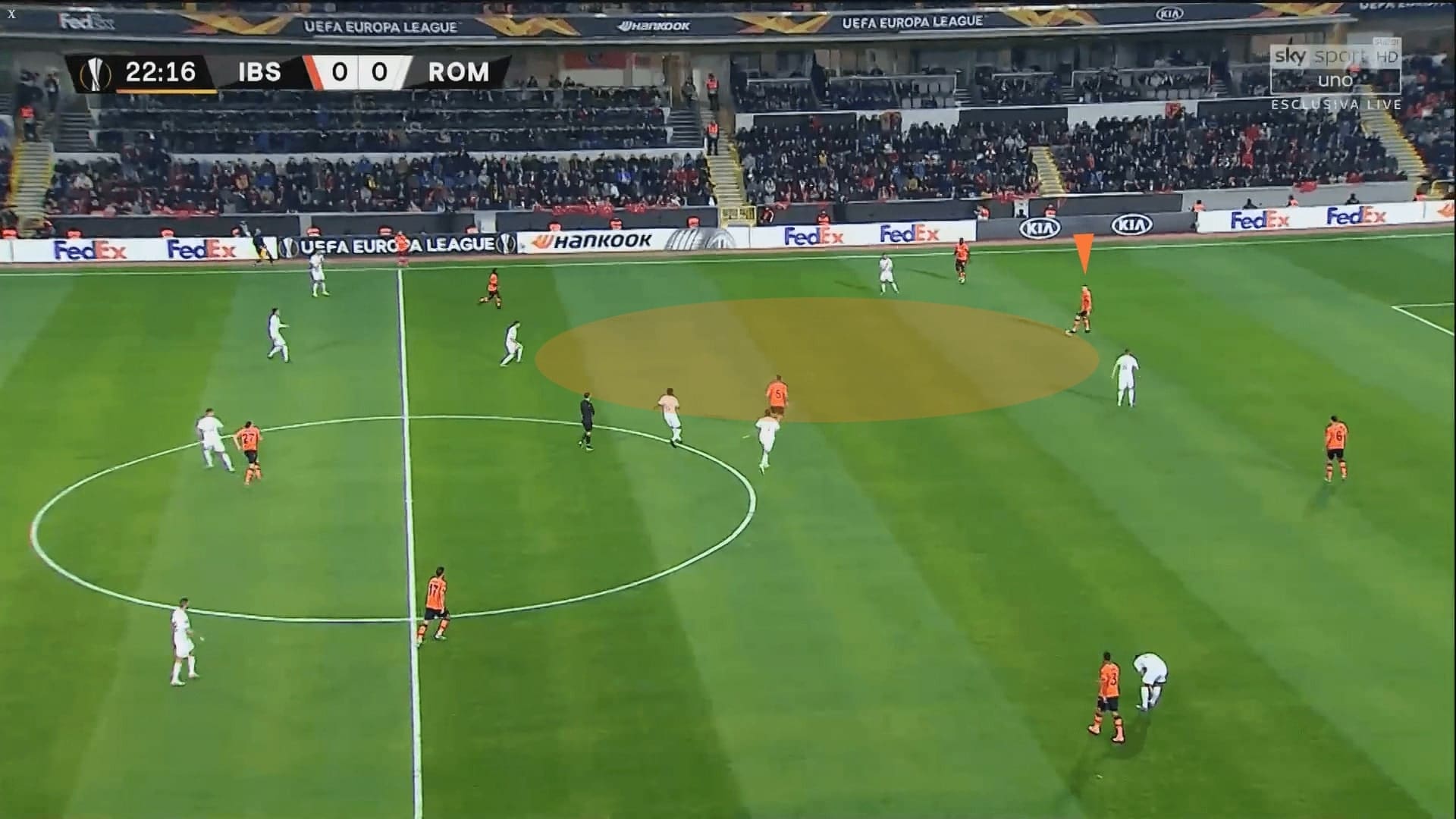
Therefore, the best solution is to progress via the flanks. In different phases of attack, initially, the ball receiver always looked to play the ball out wide. Therefore, Başakşehir needed not to occupy the centre as vertical penetration is never the priority.
In this image, you could see Başakşehir left the central areas vacant, no forward players were dropping. Mahmut Tekdemir’s first touch opened his body to the opposite flank, and the skipper quickly picked Irfan Kahveci as the option.
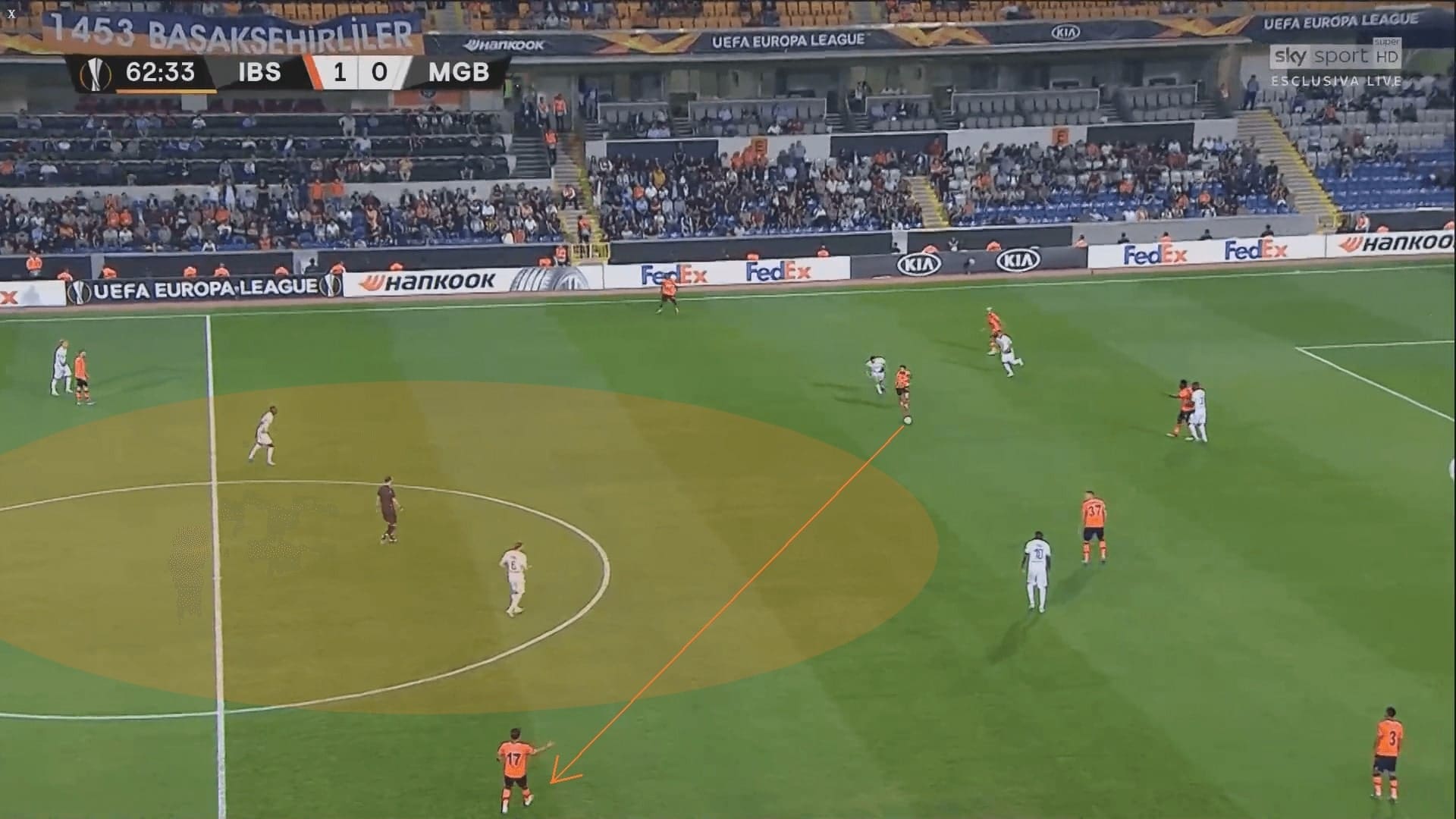
When playing wide, Başakşehir tried different combinations to progress, with one of their preferred moves being underlapping runs. A pass from a full-back to a wide player will trigger the press, as it was a ball progression. And, the winger who was marking the full-back initially also turned to press the wide player. Therefore, the underlapping movement helped the full-back to get rid of the marker for further progression.
In this example, Júnior Caiçara passed to Tekdemir. The skipper invited pressure towards him, and Caiçara seized the moment to run at the half-space. The right-back freed himself from the tight marking, had spaces to execute his next move.
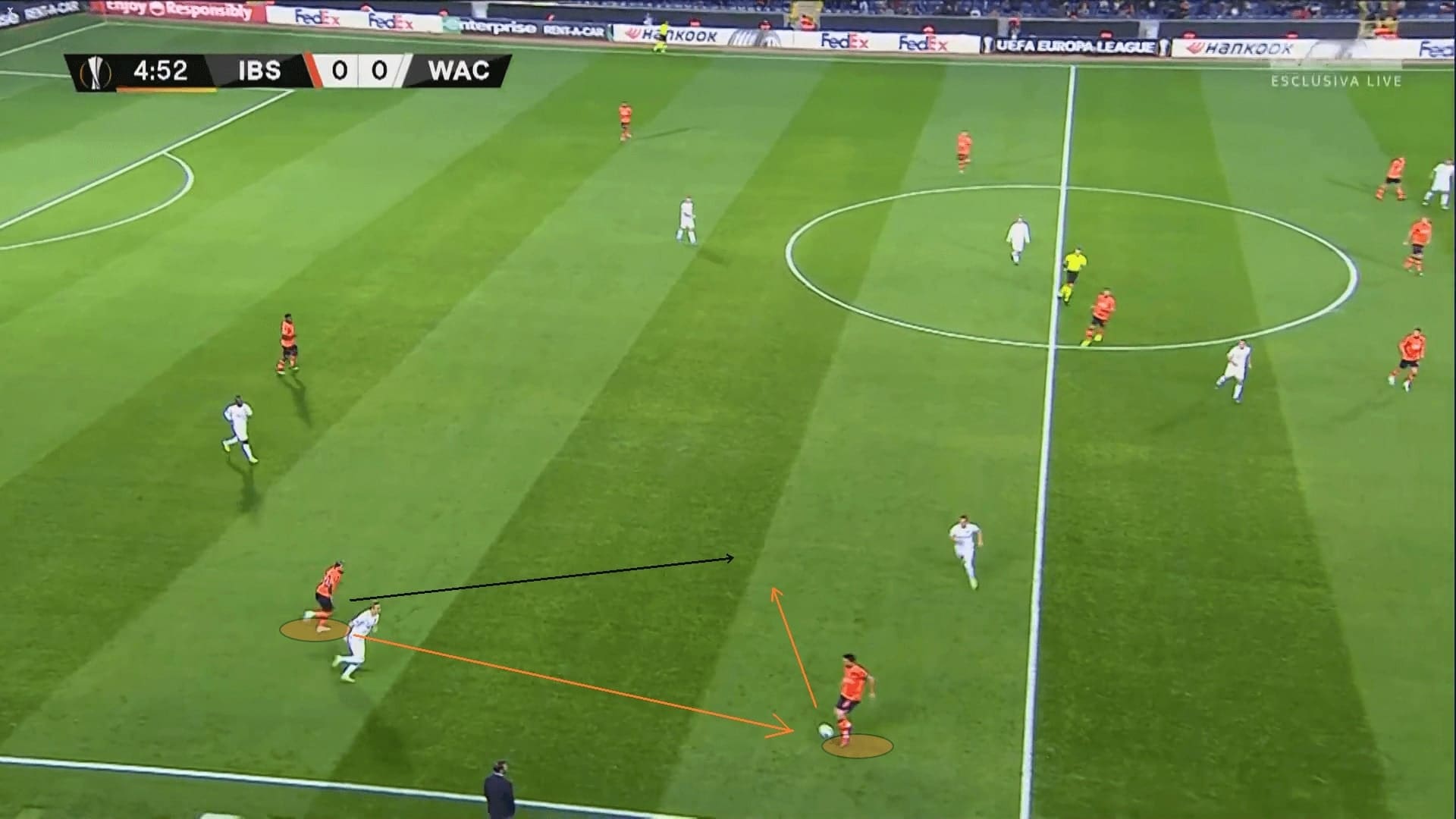
However, this approach required the correct timing of the pass and run. Usually, these were 2 v 2 situations. If one of them could not seize the correct moment, numerical equality allowed the oppositions to win the ball easier.
On this occasion, Clichy passed to the wide option, Danijel Aleksić. The Serbian immediately attracted pressure, and Clichy made his run behind his initial marker. Aleksić did not grab the timing to release the left-back. Instead, he tried to take another touch to generate a larger angle to the opposition goal, and lost the ball in a dangerous area under pressure.
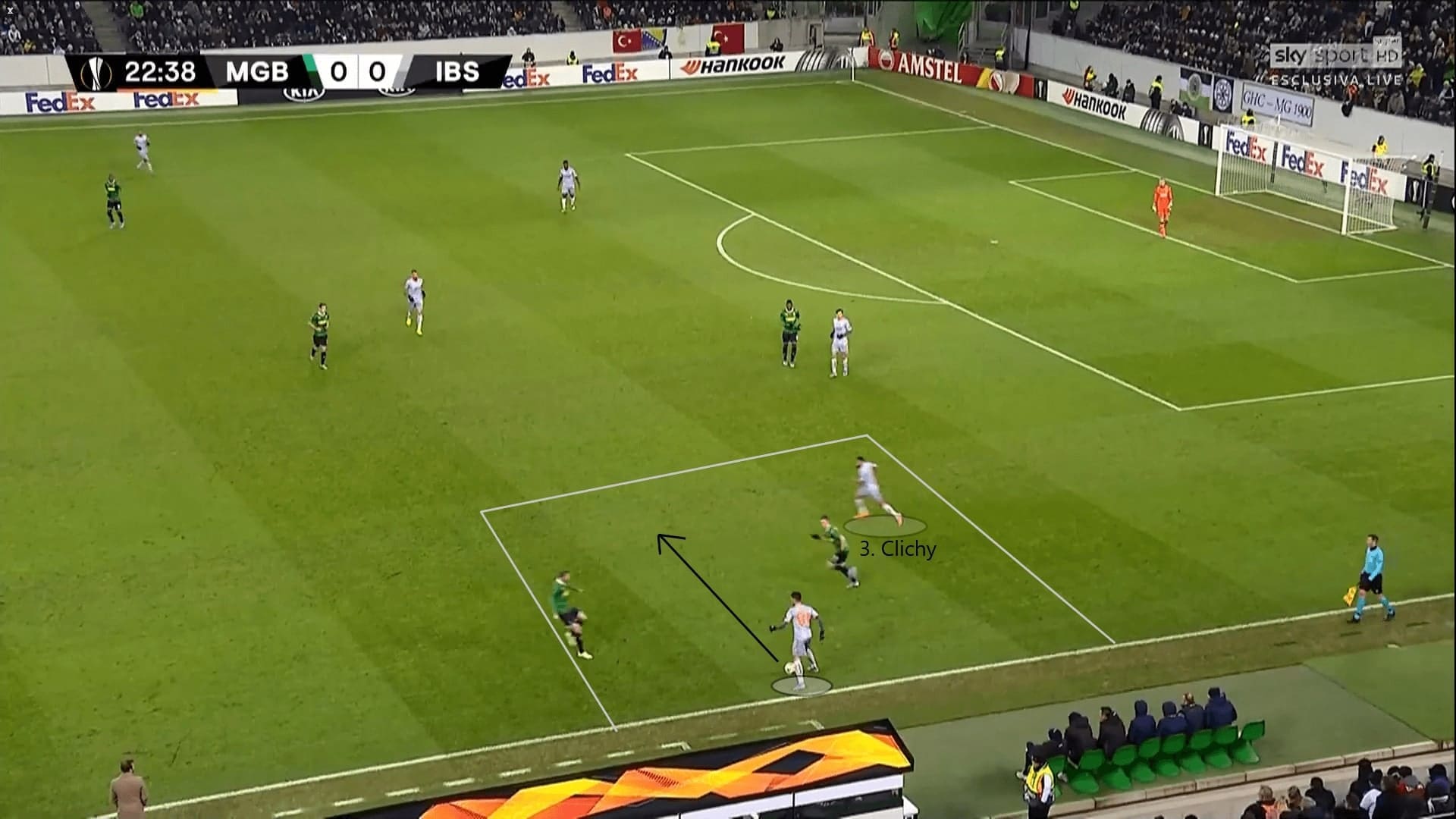
Inverted left-back
To further explain the progression of Başakşehir’s attack, we analyze their full-backs respectively. As the left-back, Clichy would invert to the centre on some occasions, the major function of this setup was to open the passing lane to a wide player. The concept is the same, Buruk’s troops were progressing the ball at flanks.
The idea of inverting the full-back is to manipulate the position of the opposition winger, since most wingers are instructed to mark the full-back. In this image, the former Manchester City player Clichy stayed at the centre, with the Sporting winger also stayed narrow with the defence. A very safe passing lane to Berkan Özcan was then opened for Škrtel.
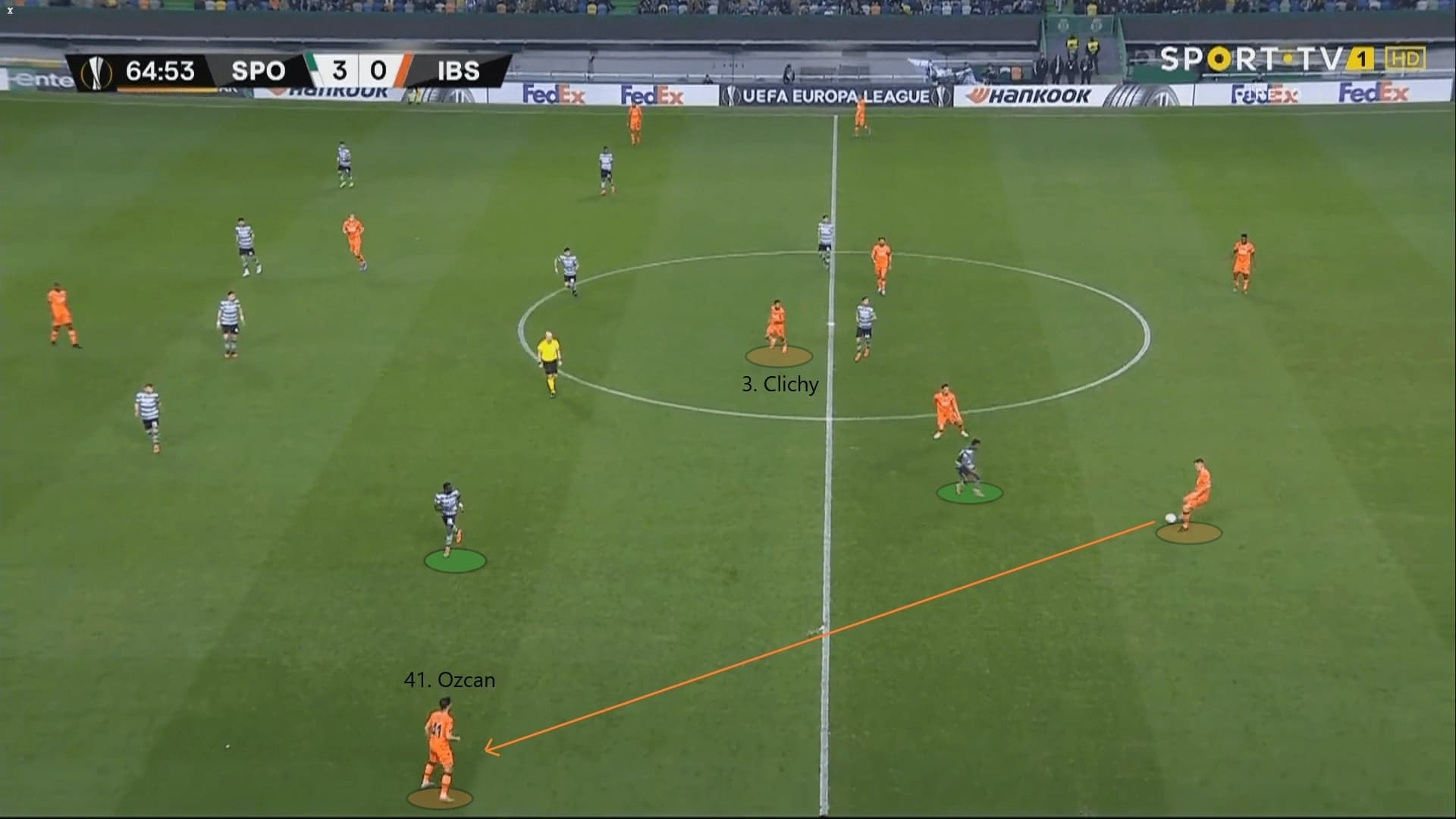
The same theory also applied in the throw-ins. In the situation, Caiçara was considering his option as Wolfsberger AC players were abundant on the ball side. In hopes of moving an opposition player, Clichy left his original position and arrived at the centre, dragging a white shirt with him. This opened the throwing lane to Škrtel for the throw-in.
Furthermore, the inverted positioning of Clichy also opened the left side of the pitch for Škrtel. The Slovakian could execute his next move with spaces.
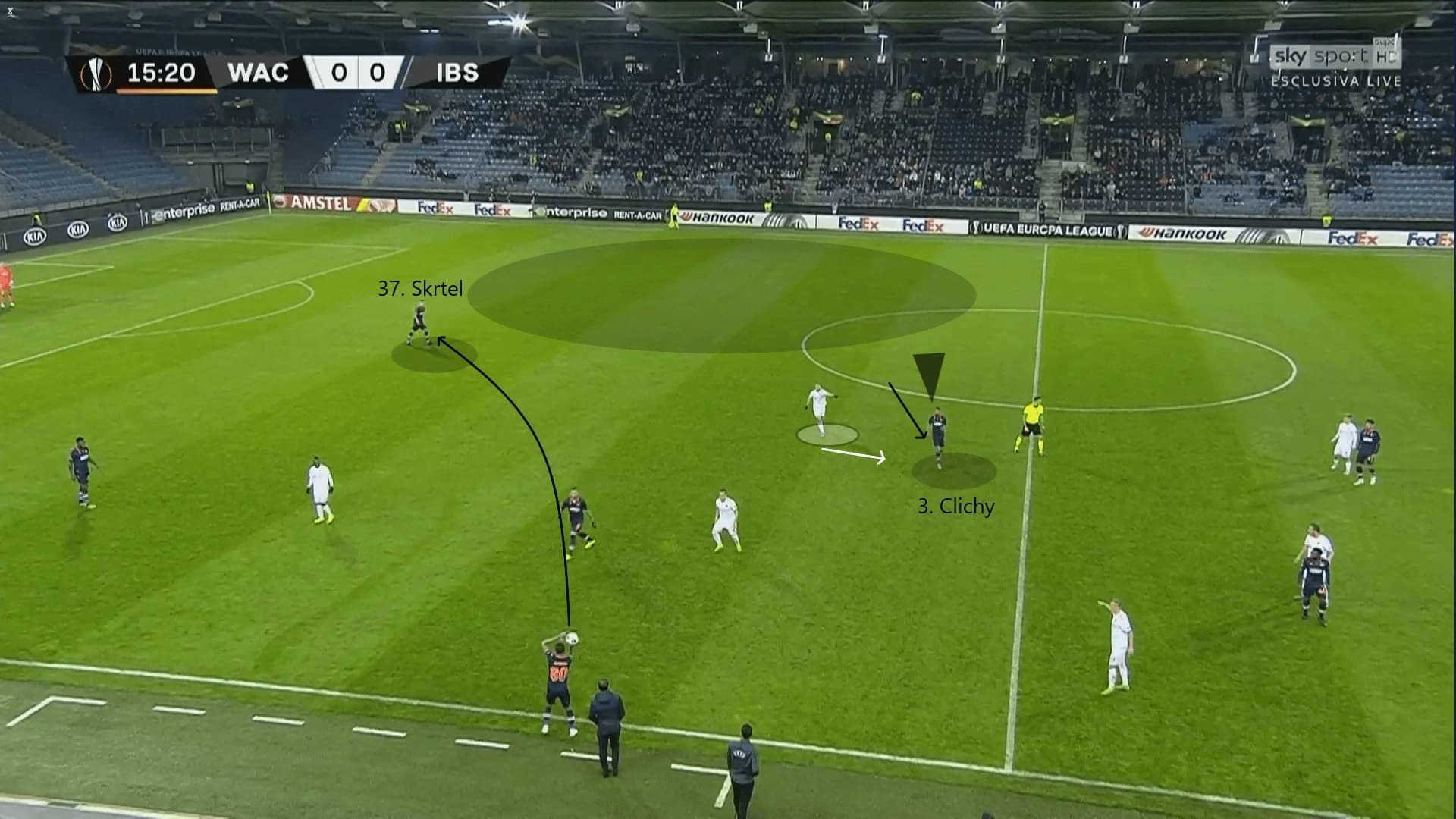
Again, when discussing Buruk’s team, the underlapping runs are an inevitable topic. Clichy did provide these kinds of runs when there was a wide player near the touchline. The core idea and assumption was the same as explained.
In this scenario, Clichy passed to the widest player, Eljero Elia. This passed lured his marker to approach the Dutchman. And, this became the moment for Başakşehir to progress the ball, as Clichy was running freely at the half-spaces, on the winger’s blindside.
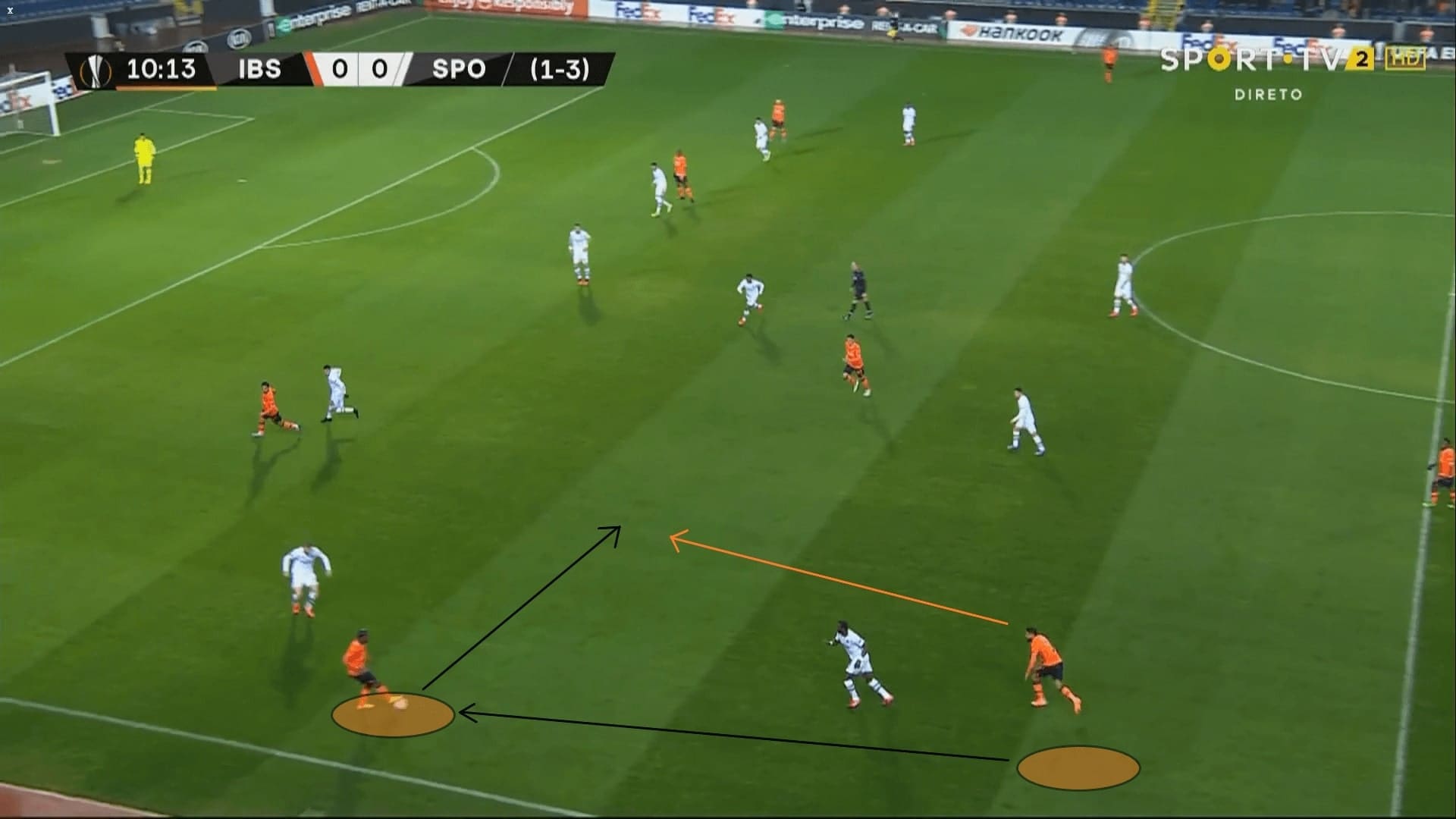
Offensive right-back
Given the differences in personnel, the instructions to Clichy and Caiçara were different. The Brazilian was more energetic, hence, his positioning was slightly advanced than the left-back. The connection between Edin Višća and Caiçara had been fluid. Mainly, in hopes of occupying more vertical zones on the pitch, one of them positioned themselves at the half-spaces and the other stayed wide. The positions were flexible, varied according to different situations of the pitch.
The Brazilian had 0.68 shot assists, 3.08 crosses and 2.17 progressive runs per 90 minutes.
In the first example between the two, it was a classic combination of a right-winger and the right-back. Initially, Višća stayed slightly inside to invite pressure, opening the wide channel for Caiçara to overlap.
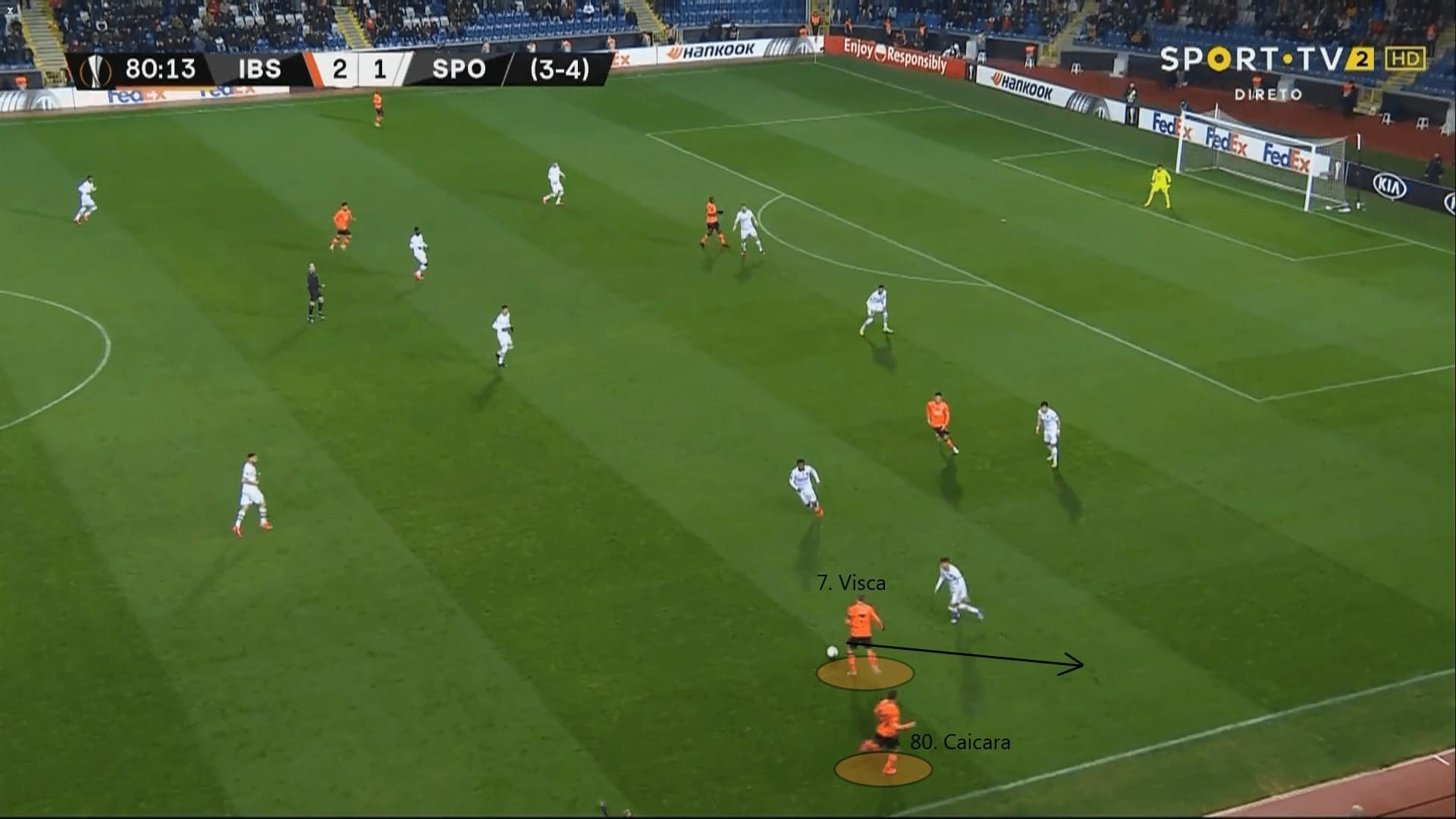
Or, for the other cases, Caiçara occupied the half-spaces since Višća stayed wide. This is the situation of the below image. If this was the case, then, Başakşehir were trying to stretch the defence, increase the horizontal gaps of the defenders.
Despite the abundance of Sporting players on the ball side, Ponck was able to progress the ball at the half-spaces. The passing lane was larger thanks to the wide positioning of Višća. This was the underlapping run again, and Caiçara managed to receive the ball as he stayed on the blindside of defenders.
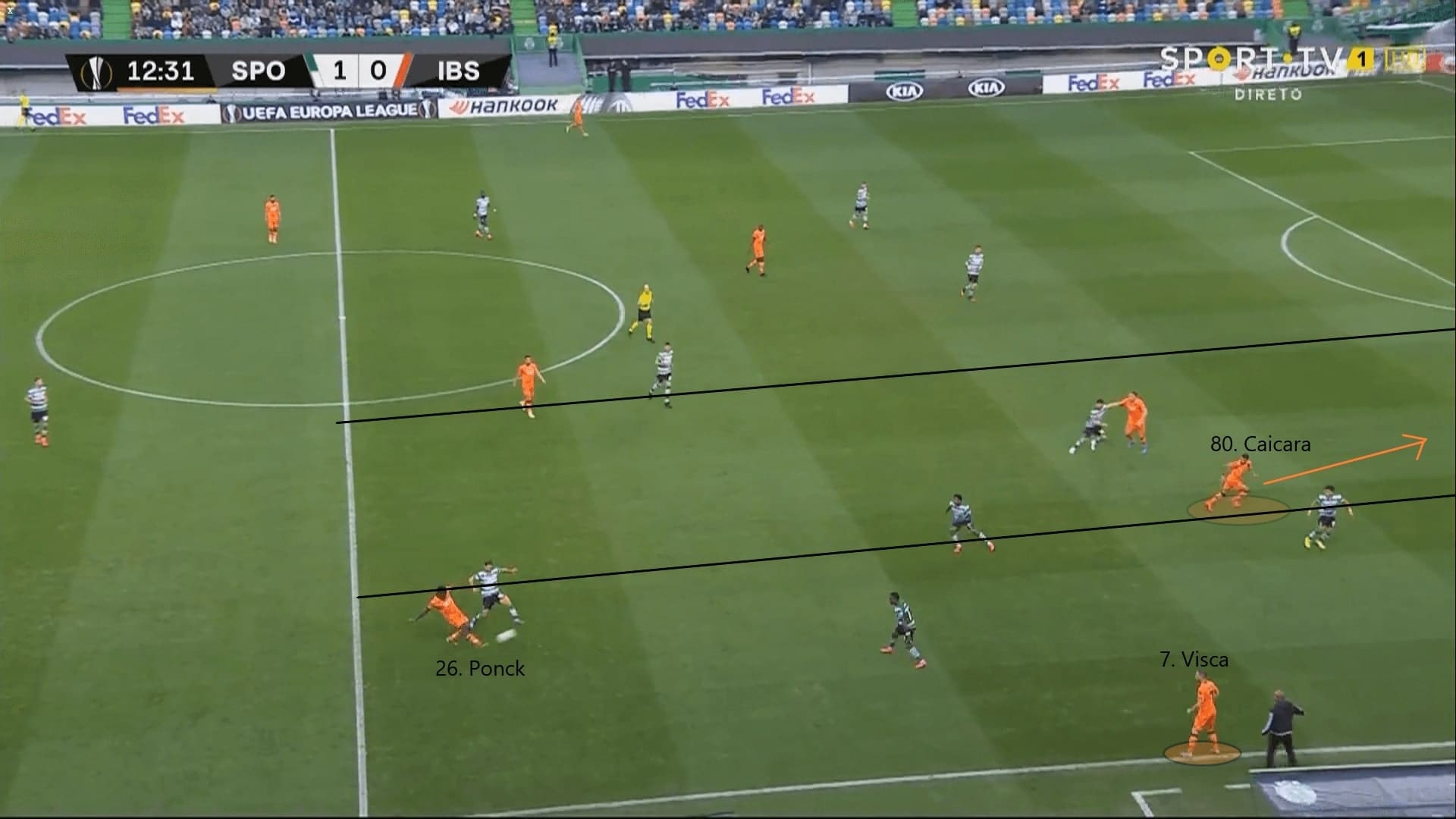
Use of width
Buruk’s team tried to utilize the width of the pitch in all phases of the attack, including the final third. In this phase, the presences of the full-backs were vital in the wide areas. Whenever the opposition block stayed narrow, Başakşehir tried to attack flanks, but kept their attacking players at the centre. They tried 13.78 crosses per game.
In the following image, you can see the dominance of Başakşehir in wide areas. Both full-backs occupied the wide corridor, and offensive players with physical strength like Ba and Enzo Crivelli stayed in the penalty box, looking to meet the cross. Buruk had good passers, one of them was Kahevci, as in this case.
The deep run from the full-backs also avoided offside. Therefore, although Kahevci’s pass was travelling to the byline, Clichy managed to reach it without being caught offside.
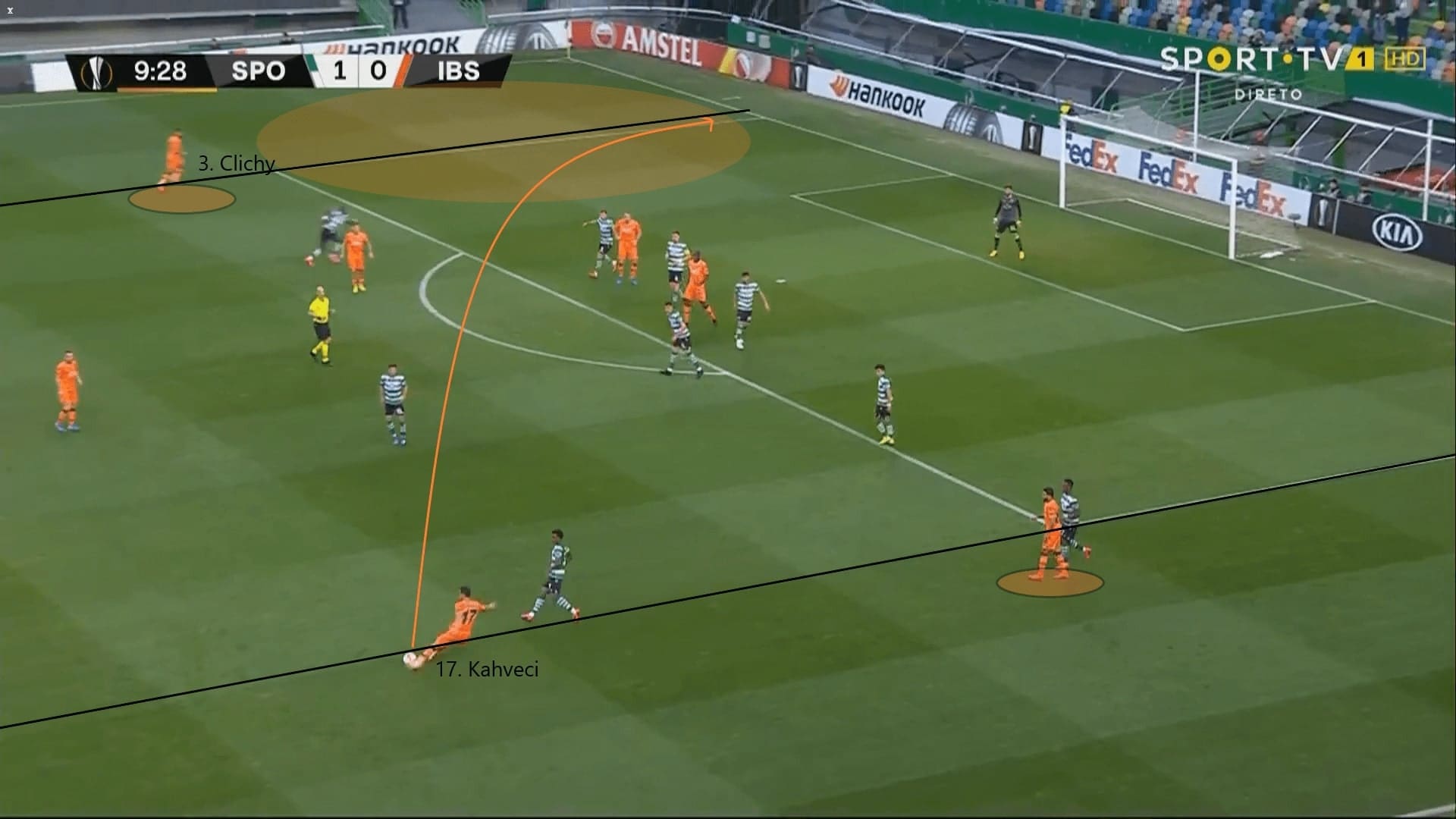
Maybe surprisingly, Clichy was a very important offensive player in Başakşehir’s attack. The experienced Frenchman had learnt under Pep Guardiola, who understood the basics of football. The left-back also improved a lot in terms of using his weaker foot and passing. Therefore, Clichy constantly creates something for the team with his good passes. This was reflected in number terms, Clichy had an xA of 0.20, 2.84 crosses (42.9%) and 1.22 shot assists per 90 minutes in the Europa League.
We are going to show you some of the best passes of Clichy. The below situation also applied the wide attack concept of Buruk’s team. The wide positioning of the left-back dragged the Sporting right-back out of position, creating an enormous gap at the left half-spaces. However, almost no defender could anticipate that Clichy passed to the final third with his right foot. The ball was travelling behind the defenders, where Ba was looking to receive.
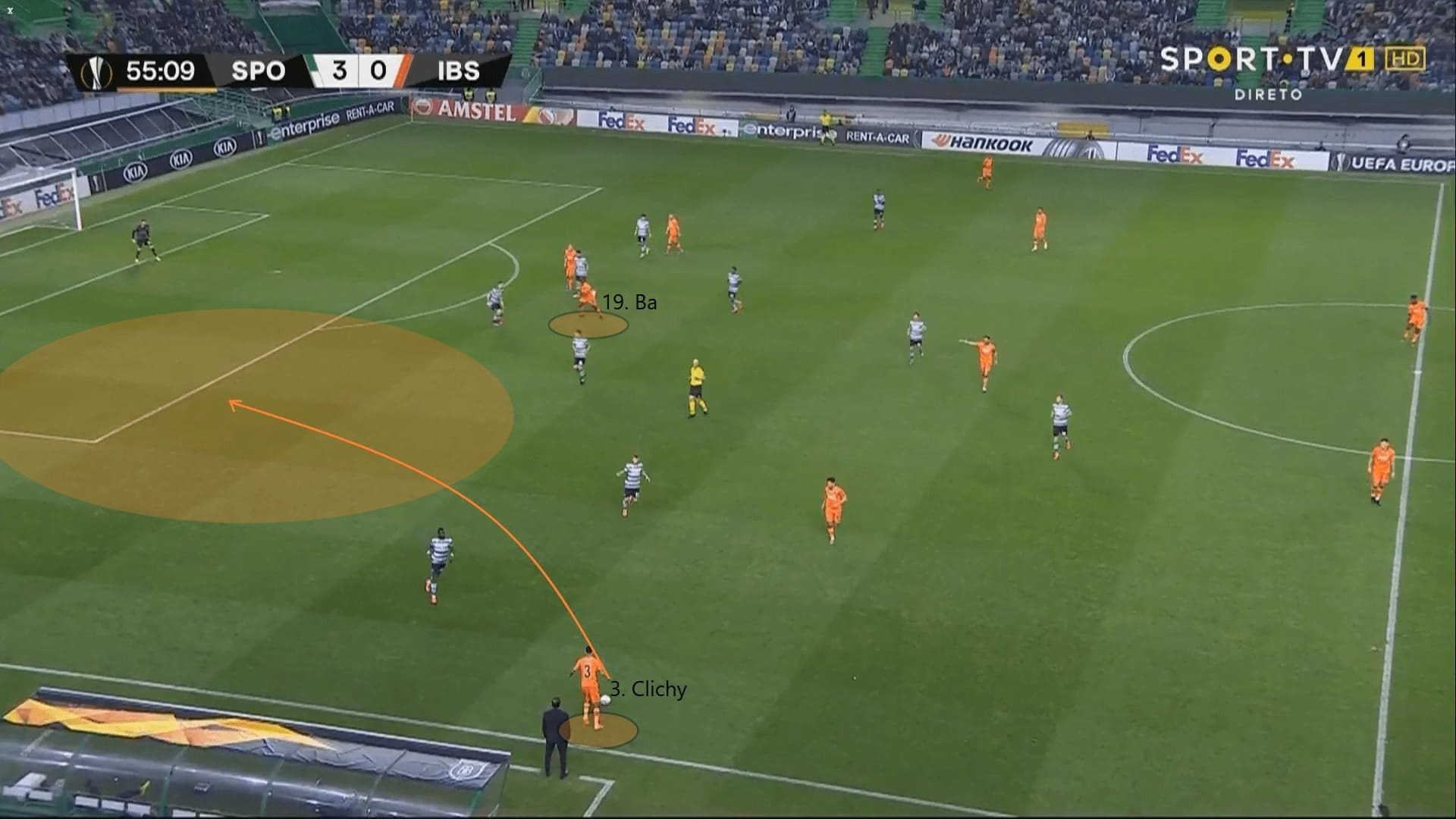
Playing with both feet helped Clichy to exercise his passes better. Another key movement of Başakşehir’s wide attack is to release the running player for a cross.
In this image, Başakşehir overloaded the flank. Compared to another option, Okechukwu Azubuike at the midfield, Mehmet Topal was more willing to join the attack in the final third. The former Valencia player timed his run well, and he was a good moving option to pass.
Since Fredrik Gulbrandsen, the left-winger, dropped deeper, he pulled the Wolfsberger AC right-back out of position. However, the release pass from Clichy was uneasy, as the close positionings of the opposition defenders potentially blocked the pass. This was the value of Clichy, as the left-back shifted the ball to his right foot, immediately releasing Topal. The Premier League winner did this quickly, allowing his team to enter the final third.
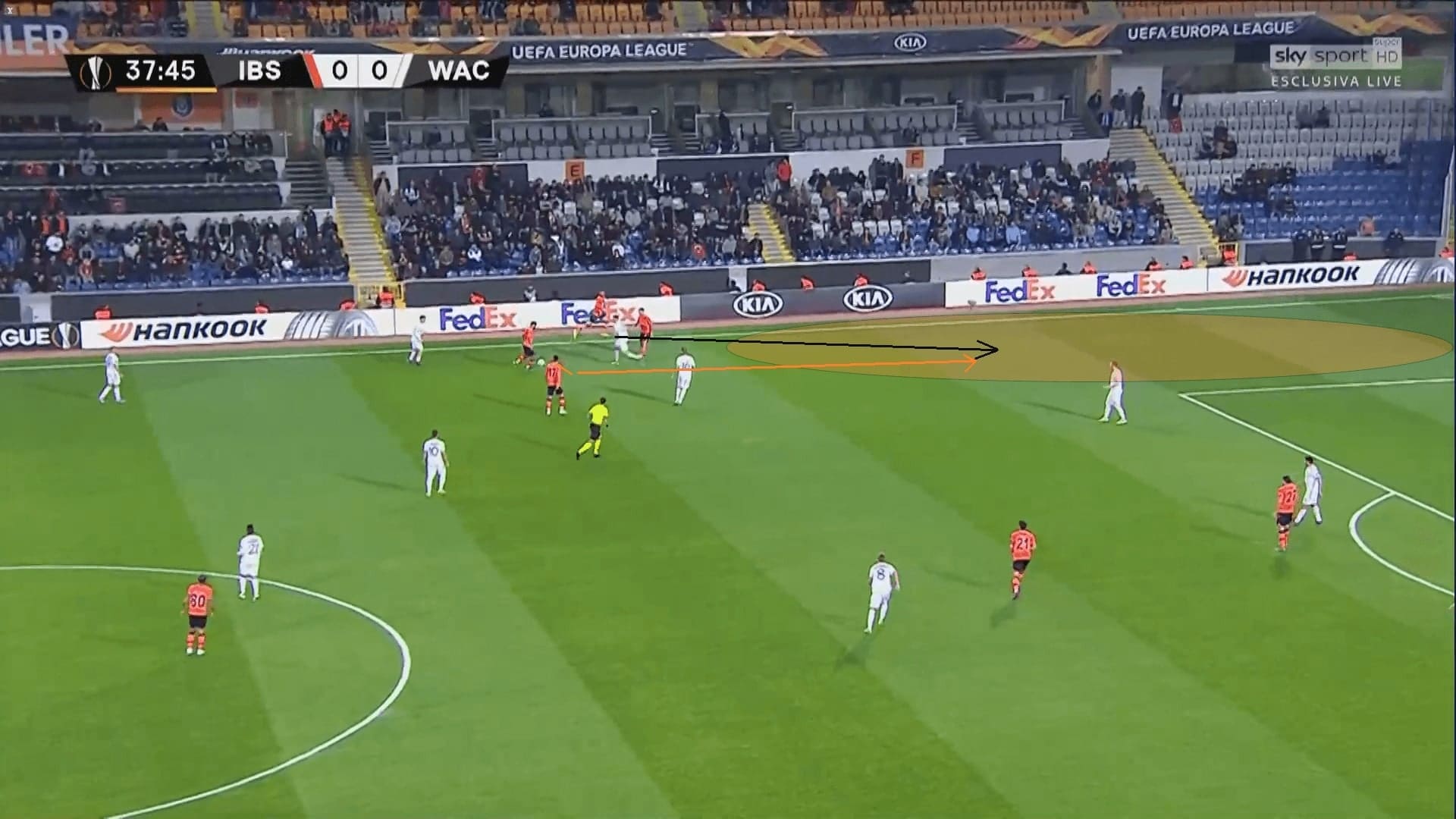
The abundance of events depended on the playing style and weaknesses of the oppositions. For example, in their latest game against København, Buruk’s tried to attack the right flank and release Caiçara to cross. The below example we chose was from the huge comeback against Sporting.
As mentioned, the positionings of the players depended on the circumstances. In this case, Caiçara stayed at the half-spaces, so Višća stayed near to the touchline. Instead of dropping to receive the ball, the Bosnian recognized spaces behind the defenders and he was released by Caiçara.
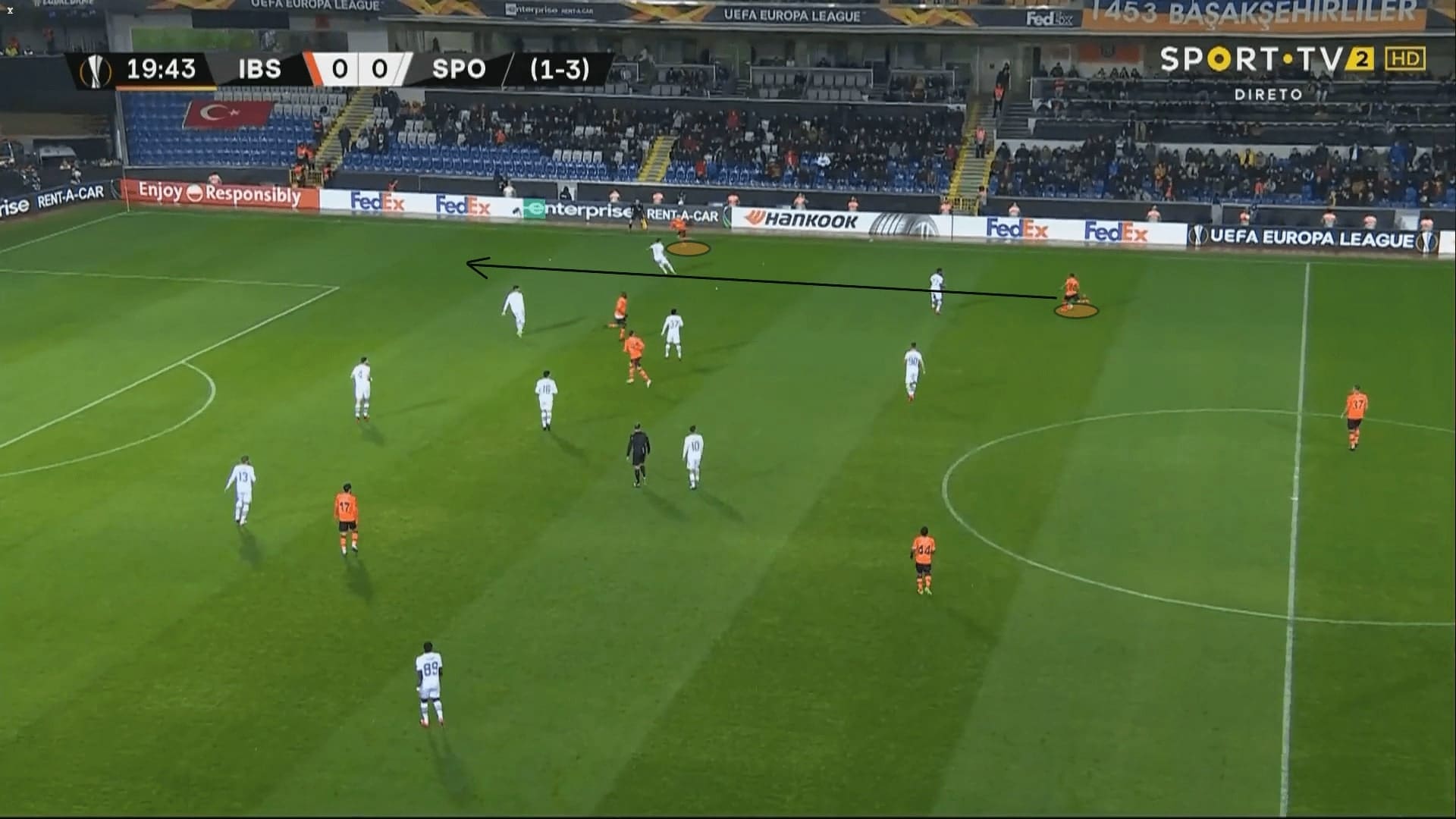
The direct approach
Playing out from the back was not dogma, as mentioned, the personnel under Buruk is limited. Playing teams such as Sporting, Başakşehir had more time and space in the build-up phases. Playing against Roma and Borussia Mönchengladbach was a different story, as both teams were marking tighter. In those cases, Başakşehir took no risks to move the ball in the defensive third.
This explained the figures for the long pass percentage. Their average in the competition was 13.61%, but the highest and lowest figure had a huge margin, 6.95% (vs Sporting at home) and 18.16% (vs Wolfsberger away from home).
We tried to explain the benefit of this approach with the following image, it was a game situation when Buruk’s team were playing at Borussia-Park. The right-back of Başakşehir, Caiçara had the ball. Ahead of him, his teammates formed a passing triangle to overload the central third. The drop of the right-winger also took the opposition left-back out of position. Despite forming favourable connections at the midfield, Caiçara still tried a long ball.
This was because of the 3 v 3 situation at the frontline. With the majority of Mönchengladbach players joining the press, their backline exposed in three separate 1 v 1 situations. It was only a race of physical qualities, after Caiçara played forward. And, it was a more direct but less risky approach to attack the goal quicker.
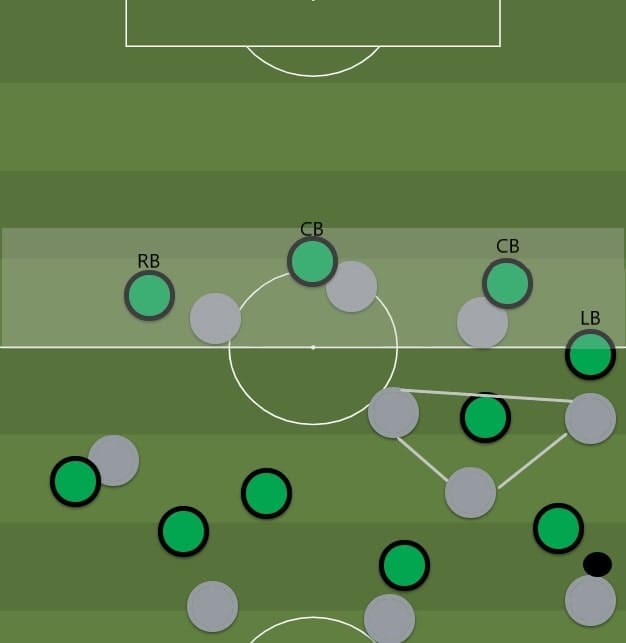
When the short options for the keeper were limited, Mert Günok never hesitated to play long. Moreover, the keeper was only aiming at flanks, instead of using Ba or Crivelli as the target men.
For example, both Topal and Azubuike were unavailable in the below situation. Günok tried to play the ball to the left flank. In these cases, the front players of Başakşehir were always ready for a pass, providing the height and width of the attacking shape.
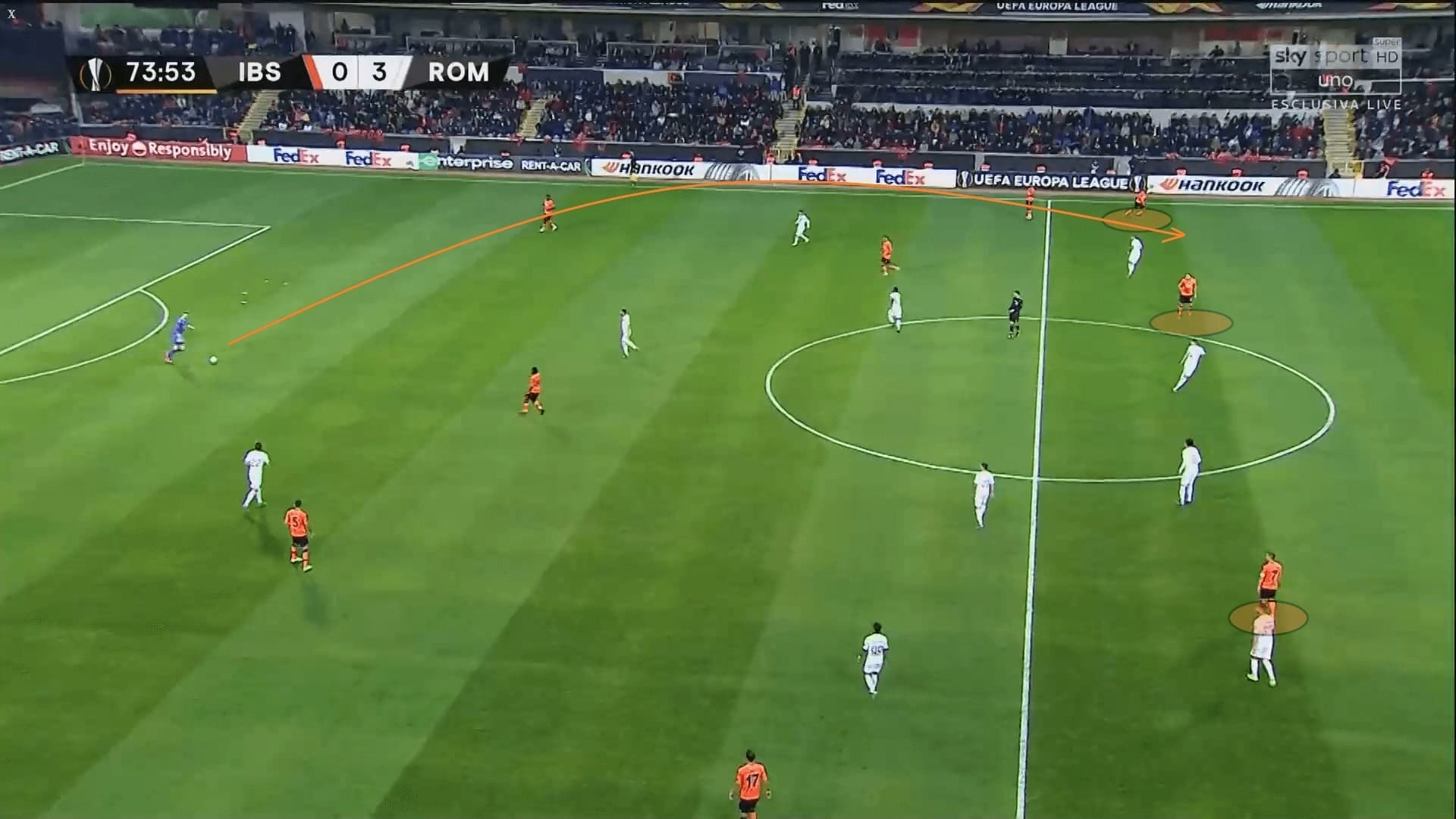
On some occasions, the positionings of the front players were even more extreme. In the above image, Başakşehir had three players at the front line. In the following image, they had five! These included Clichy, who provided the width on the left flank. The shape of Buruk’s team temporarily became a 3-1-1-5. The front five were attacking the back four, enjoying four separated 1 v 1 situations with a free player.
However, the kicking ability of Günok was limited. Therefore, sometimes the wide players were not released in this type of attack. The success rate of his long passes was 51.70% from 11.76 trials. For a reference to compare, Ederson and Marc-André ter Stegen completed 70.2% and 67.2% in the UEFA Champions League this season.
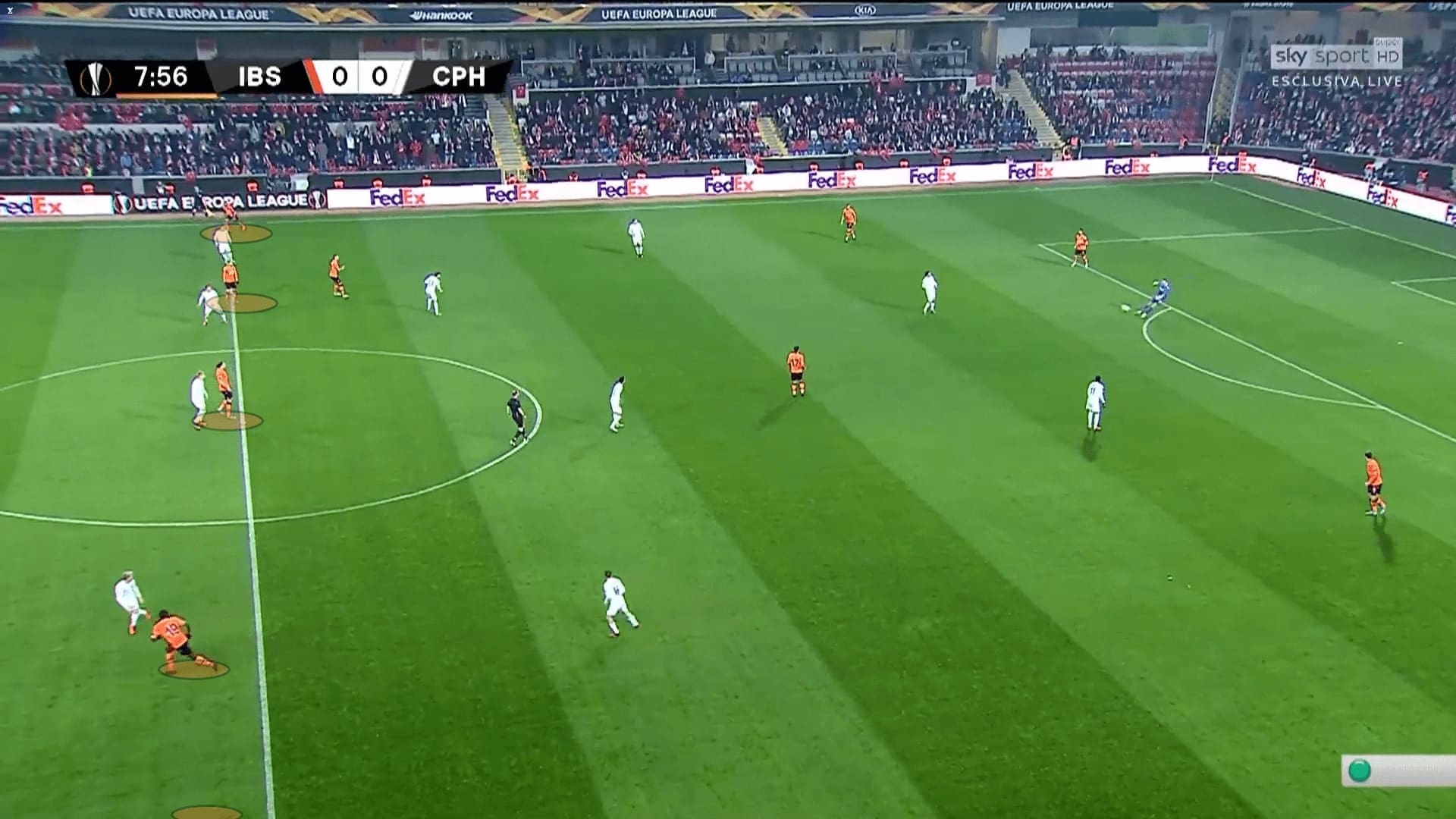
Although the long ball might not have been successful initially, Başakşehir still had the chance to win the second ball in an advanced area. If they did, then, they were still attacking in a high position with fewer defenders in front of them.
Taking the following image as an example. Višća could not win the aerial duel, but Ba won the second ball and played it to Kahevci. Başakşehir were still starting the attack high. Again, Kahevci was a good passer who always played the ball to spaces instead of the player’s feet. This allowed the receiver to continue his run in full speed, as Višća did in this case.
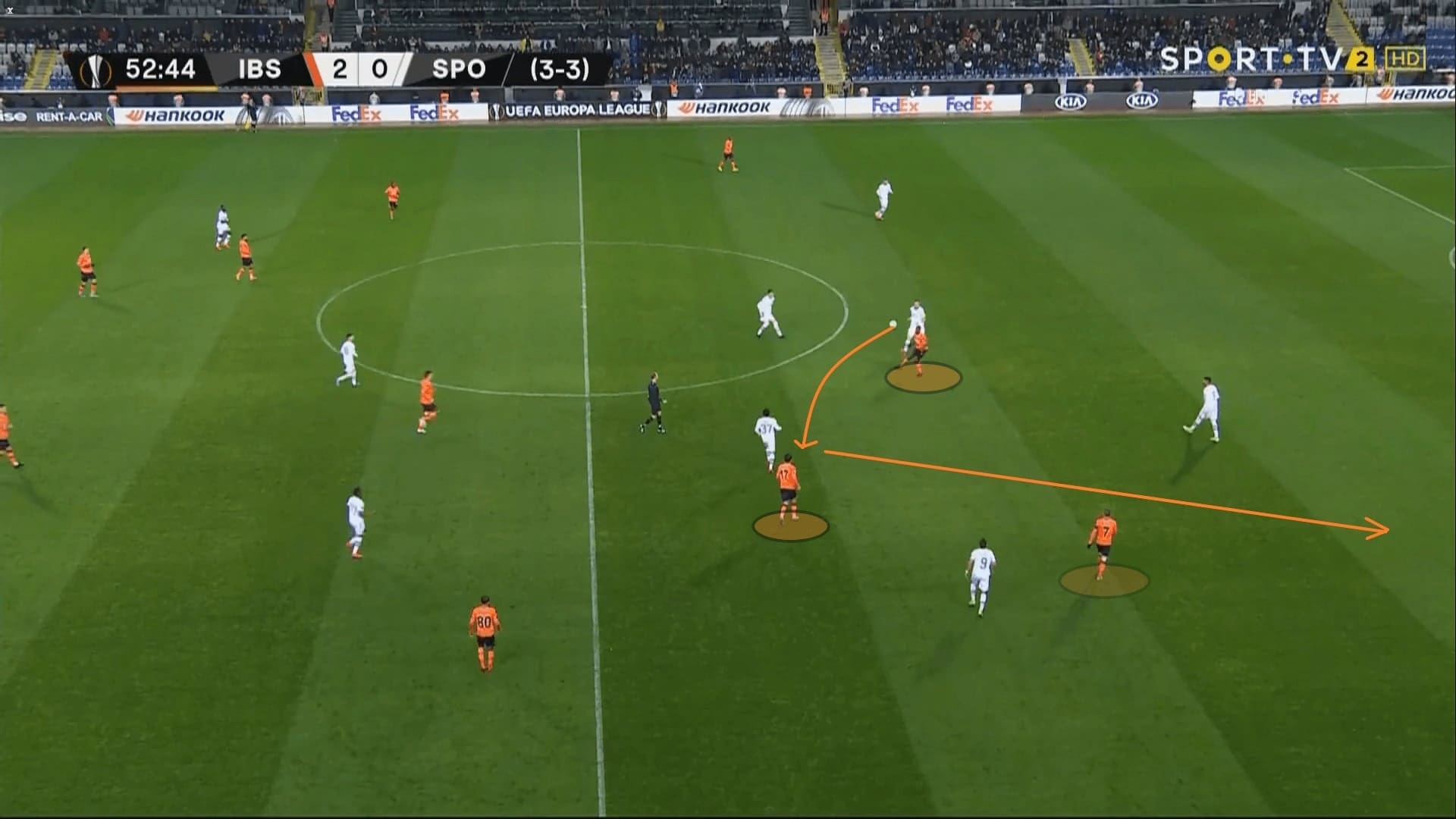
Conclusion
Despite scoring many late goals from set-pieces and penalties, Başakşehir still had to enter the advanced areas for the opportunities. Buruk likes to try different approaches against different opponents, but the concept in attacking flanks almost never changes. The strengths of the full-backs, Clichy and Caiçara were fully utilized under this system. They could be slightly more clinical in front of the goal, as currently, their xG in the competition was 1.50, slightly higher than their 1.44 goals per match.




Comments